Earthly Matters
Explore a unique collection of minerals that tells the story of human curiosity about the material world around us.
Ongoing
du Pont Lobby
Across centuries and cultures, MINERALS have provided humans with essential raw materials.
We’ve used them as currency to trade. We’ve made them into ceramics and plumbing. We now harness their ability to conduct and store electricity to power our cell phones and cars.
For thousands of years, humans have mined minerals for their value and studied them for their utility. But because minerals vary so much from each other, they have been challenging to organize and define. The categories we’ve used have also changed over time, based on evolving needs, desires, and knowledge. The characteristics and qualities we’ve seen in these objects reveal humanity’s efforts to know and use the natural world.
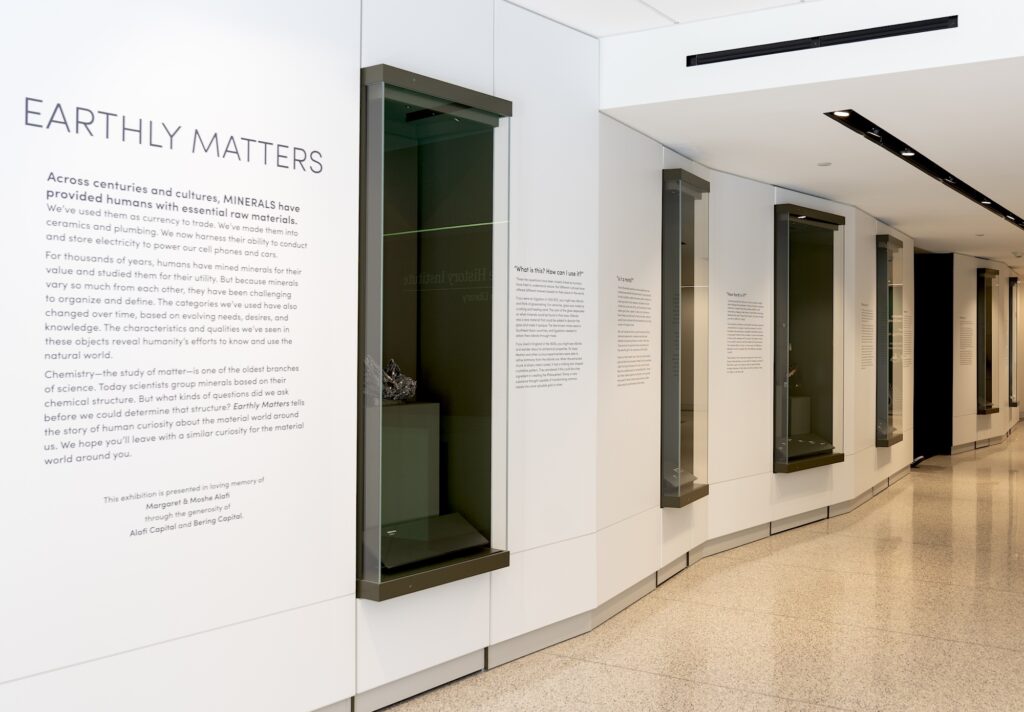
Chemistry—the study of matter—is one of the oldest branches of science. Today scientists group minerals based on their chemical structure. But what kinds of questions did we ask before we could determine that structure?
Earthly Matters features a collection of more than 20 minerals recently donated to the Science History Institute. Elements, crystals, gemstones, and even a meteorite are on display in seven state-of-the-art cases that ask:
- What is this? How can I use it?
- Is it a metal?
- How hard is it?
- What color is it?
- Does it glow?
- Why does it…?
- Is it from Earth…or from space?
Featured Minerals
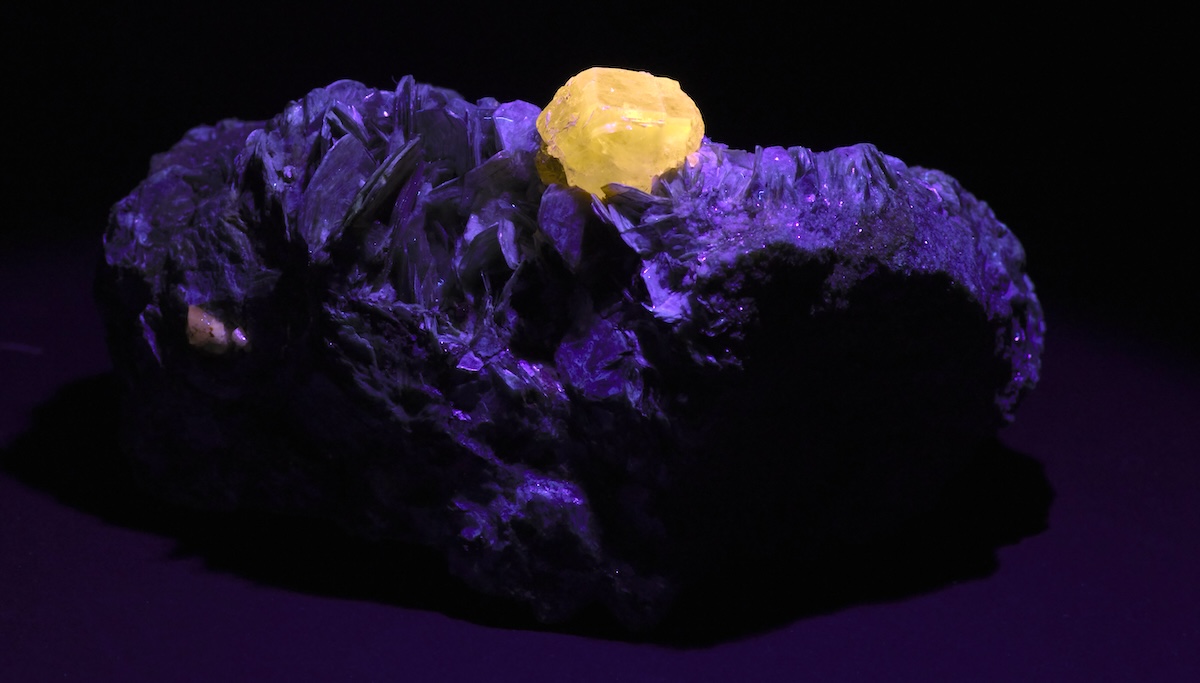
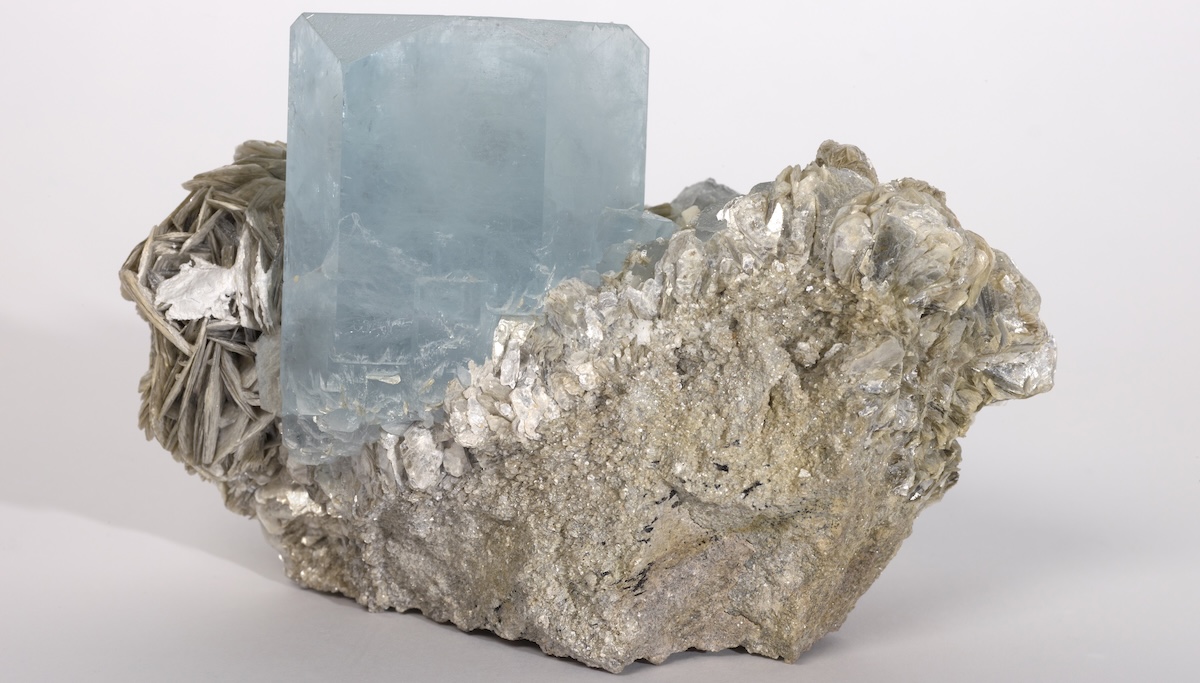
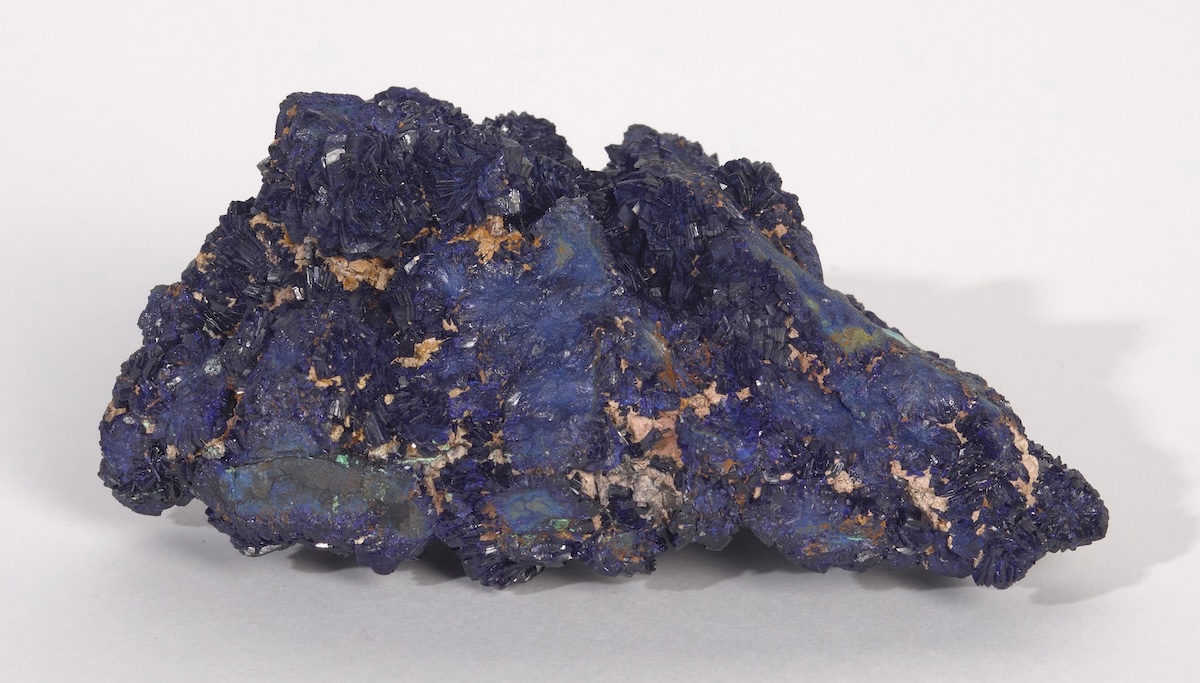
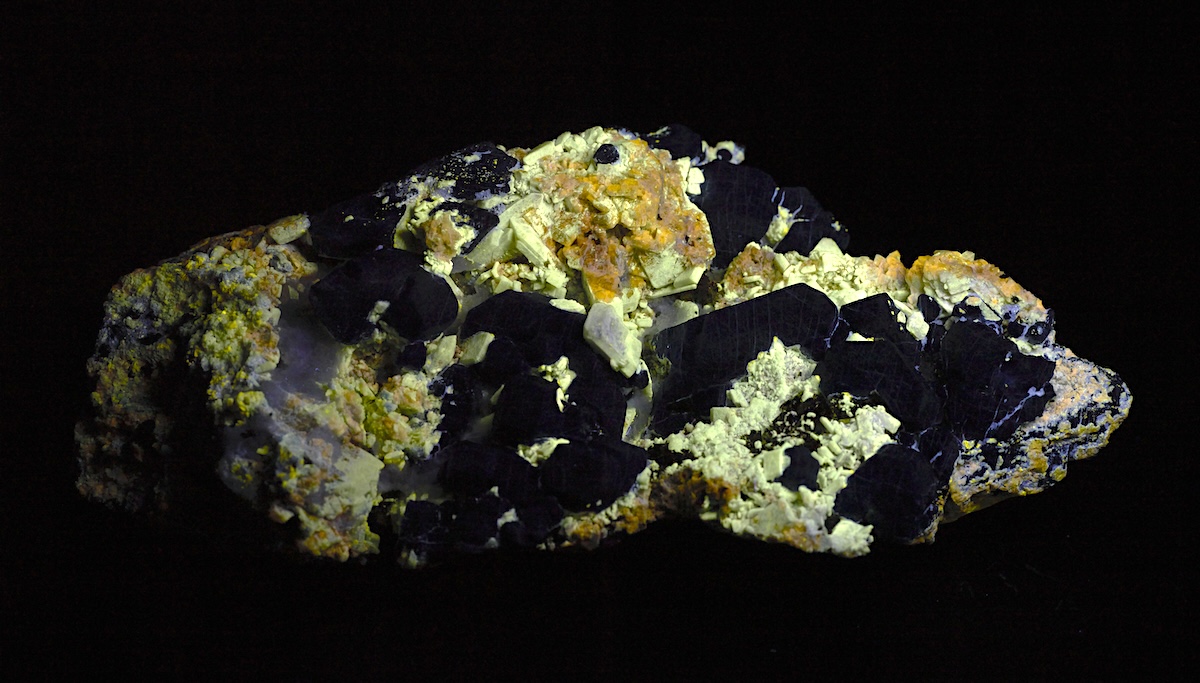
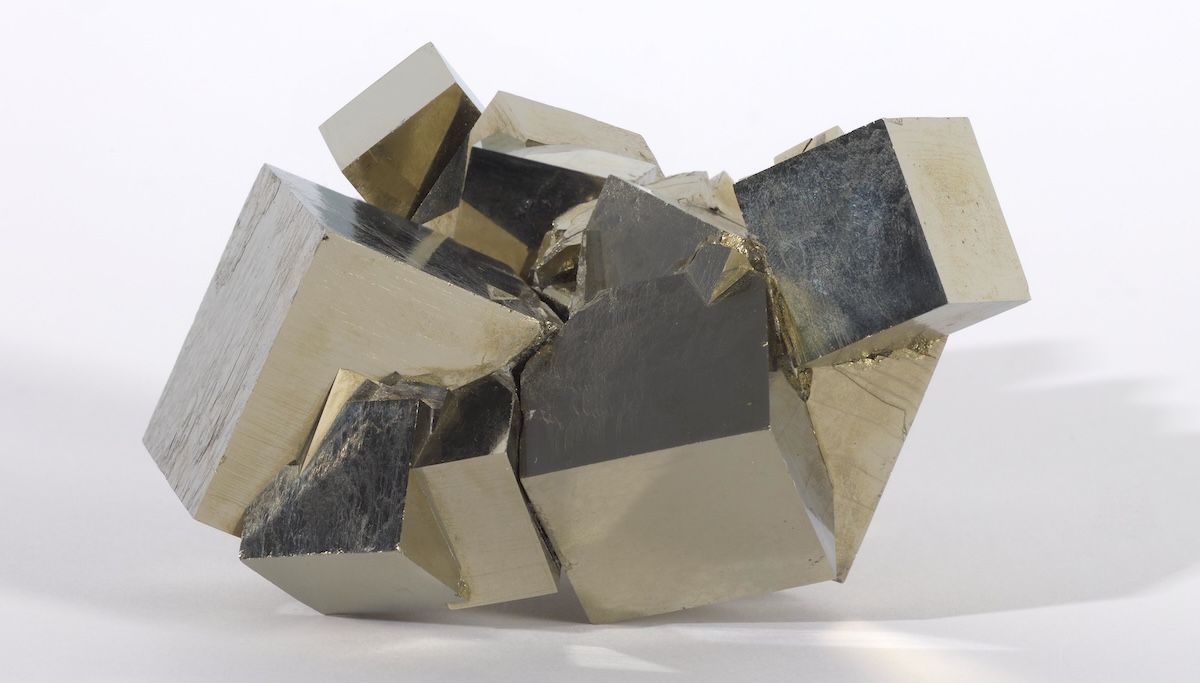
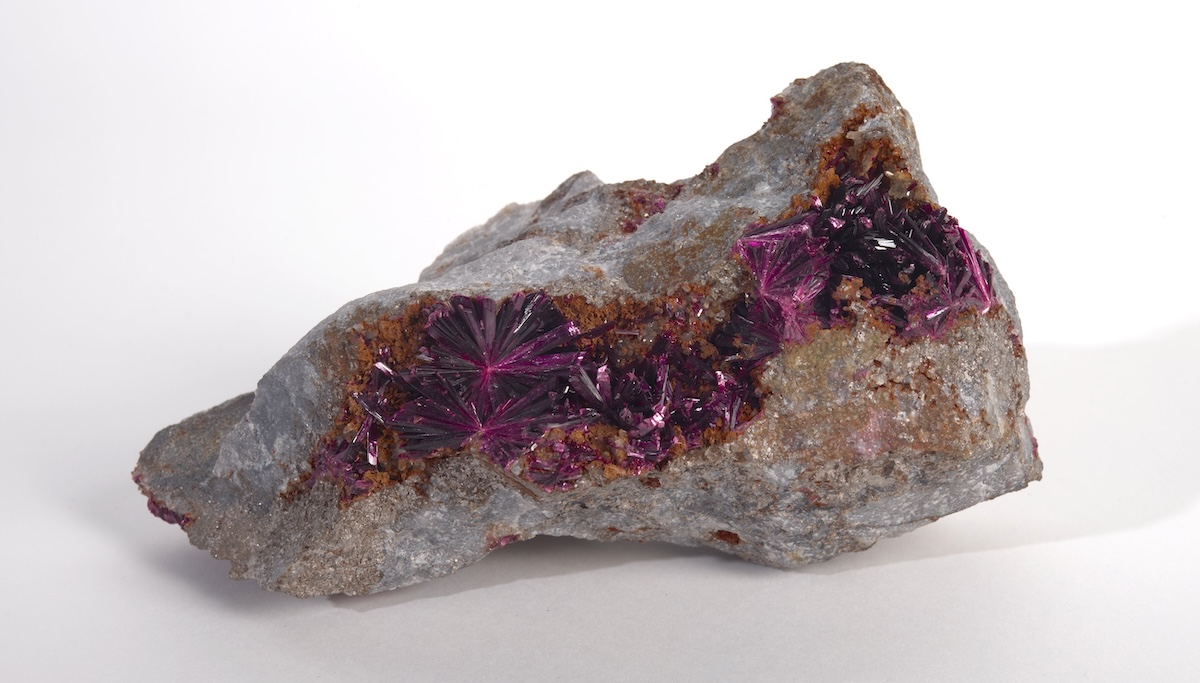
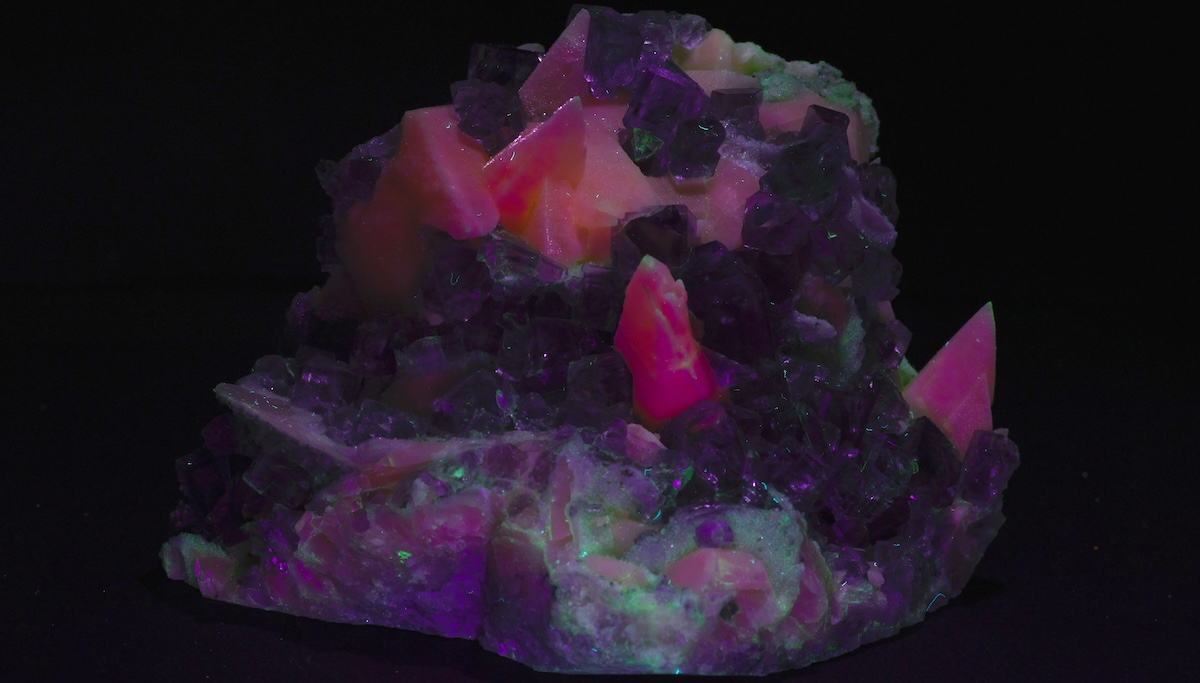
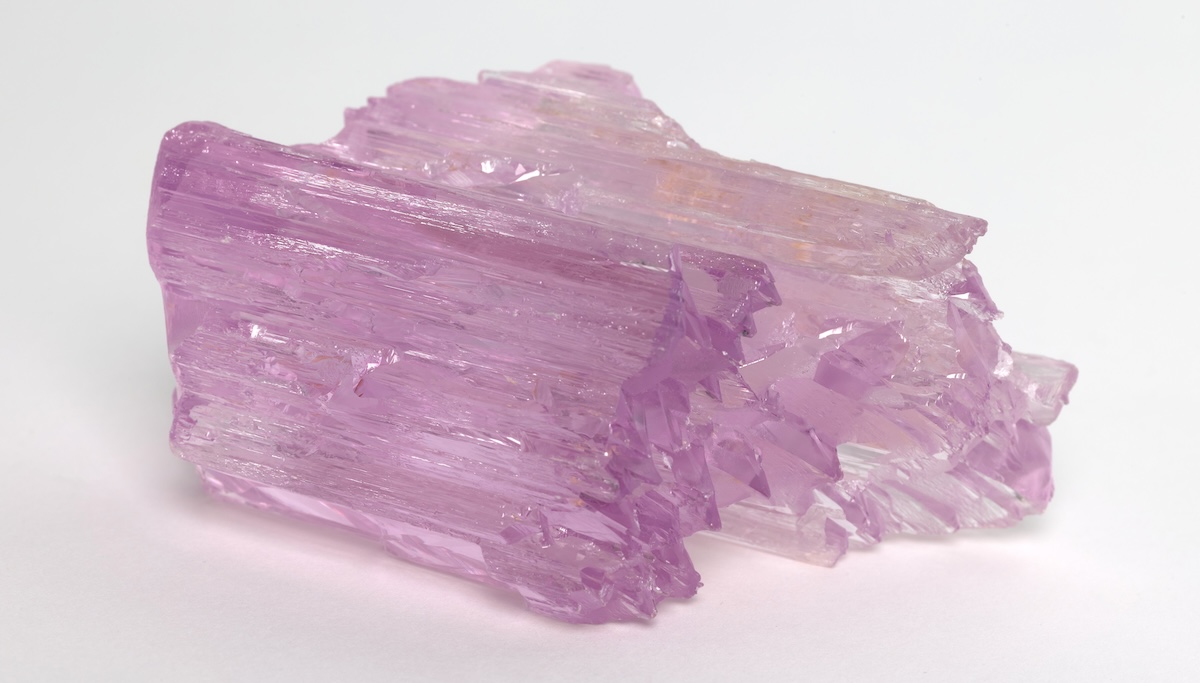
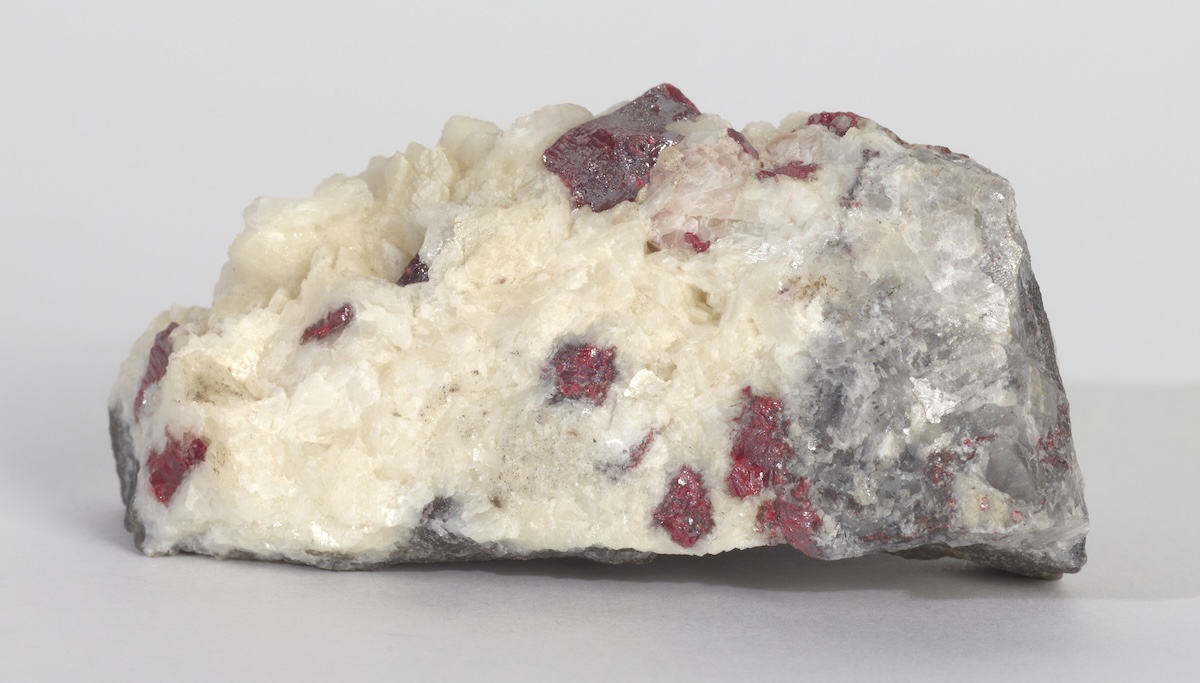
Support
Earthly Matters is presented in loving memory of Margaret & Moshe Alafi through the generosity of Alafi Capital and Bering Capital.
Featured image at top: Azurite specimen featured in Earthly Matters.
You might also like
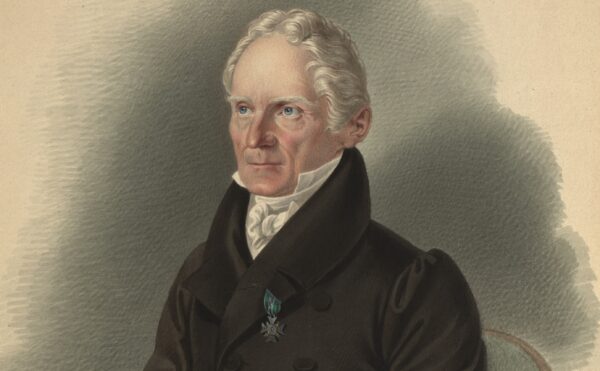
SCIENTIFIC BIOGRAPHIES
Friedrich Mohs
The German mineralogist created the Mohs Hardness Scale, a simple tool for determining the hardness of minerals that is still used today.
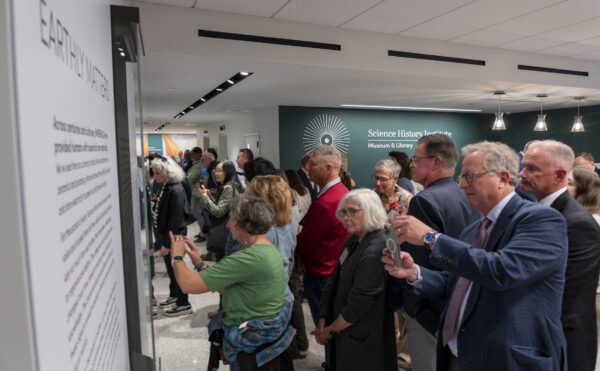
NEWS
New Mineral Exhibition Unveiled at Packed Opening Celebration
Ribbon cutting officially opens ‘Earthly Matters’ and brand-new gift shop.
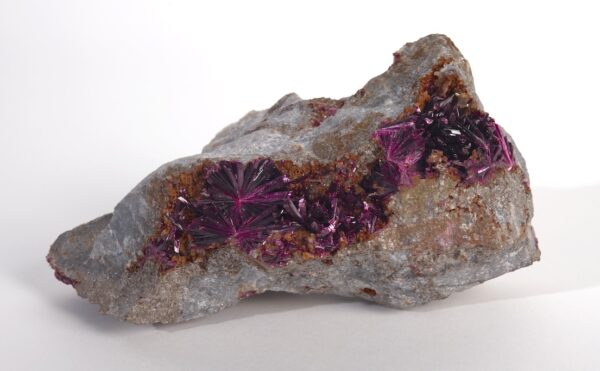
DIGITAL COLLECTIONS
Earthly Matters Collection
View the 23 elements, crystals, gemstones, and precious metals featured in our ‘Earthly Matters’ exhibition.
The du Pont Lobby is named after French American chemist Éleuthère Irénée du Pont (1771–1834), founder of the DuPont Company, one of today’s leading science and engineering enterprises.
